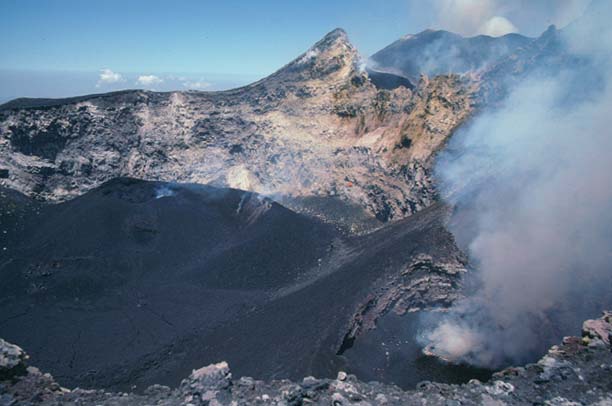 Bocca Nuova 13.7.98 from the S rim. Strombolian eruptions were produced by the vent in the far left, whereas only gas puffs were observed at the vent in the right foreground (but which produced nice smoke rings occasionally: see video page). | 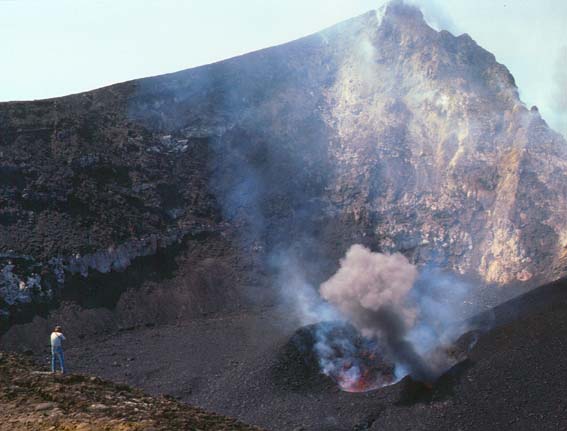 Voragine 13.7.98 from NEC. Boris Behncke is observing an eruption from a fissure near the N vent. Most other eruptions came from the N vent itself, first extruding a magma bubble, which then would explode with a deafening noise (see video page). | 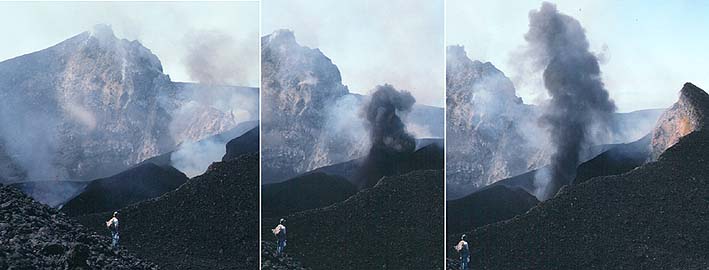 Voragine 13.7.98 from the slope of NEC. The SW vent is producing an ash rich eruption. The noisy N vent is on the left. Activity in the Voragine seemed to vary considerably on a scale of several hours. | 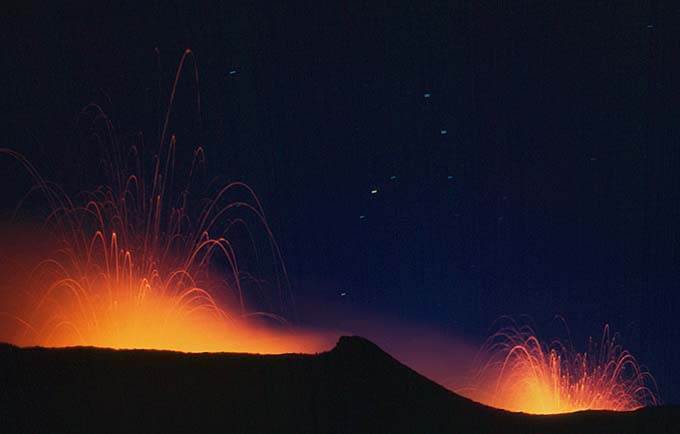 Voragine and Bocca Nuova 14.7.98 from the «parking lot» W of the summit craters. Between the two craters the constellation Scorpius has risen (note the prominently reddish star Antares). |
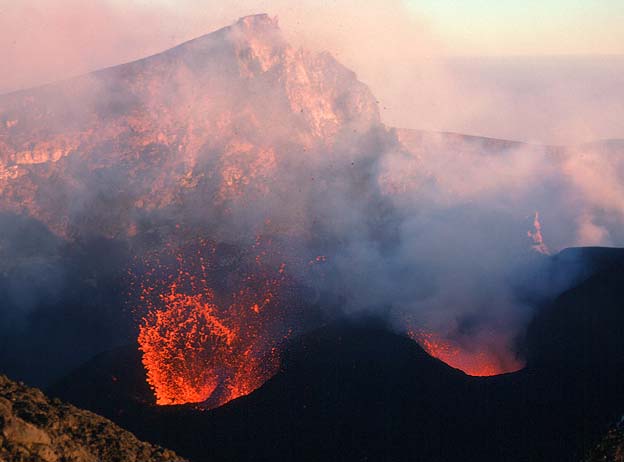 Voragine 14.7.98 from NEC. The photo was taken a fraction of a second after the bursting of the extruded magma bubble in the N vent. The SW vent had a shallow lava pond inside and erupted less vigorously. | 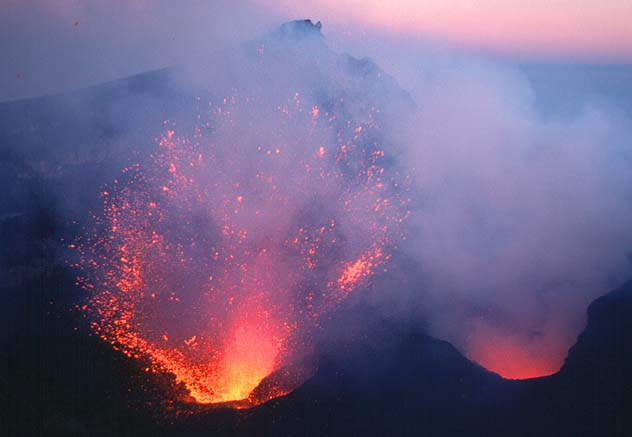 Voragine 14.7.98 from NEC. Powerful explosion caused by the bursting of the extruded magma bubble in the N vent. Taking these photos was rather nerve-wrecking as some of the bombs flew much higher than the summit of NEC. | 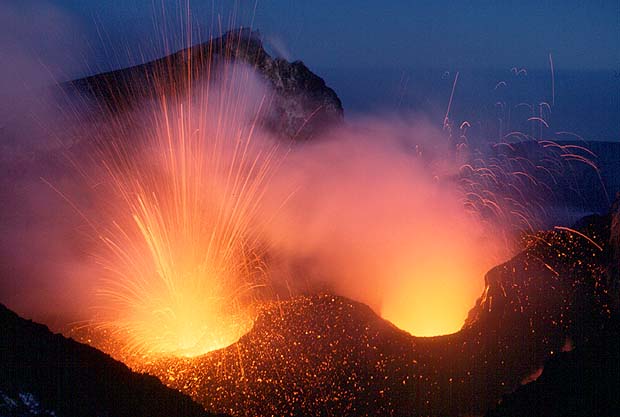 Voragine 14.7.98 from NEC. This photo illustrates the difference in the activity of the two vents: Violently explosive in the N vent (left) and more moderate in the SW vent. The dynamics of the eruptions is better conveyed by the material on the video page. | 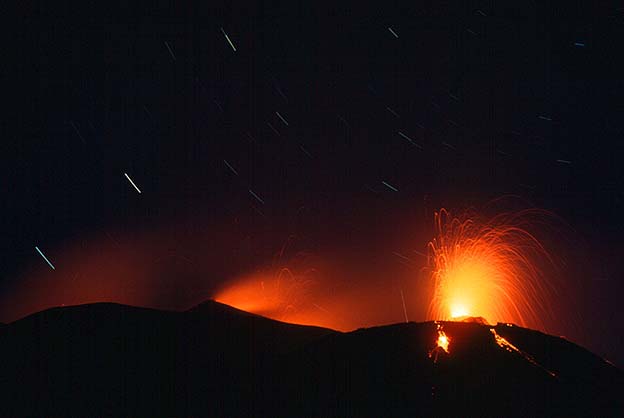 Bocca Nuova (left), Voragine (center) and South East Crater 14./15.7.98 from Torre del Filosofo. Strombolian eruptions at SEC occurred ever few seconds and were visible as far away as Catania. Short lava flows in the right foreground. |